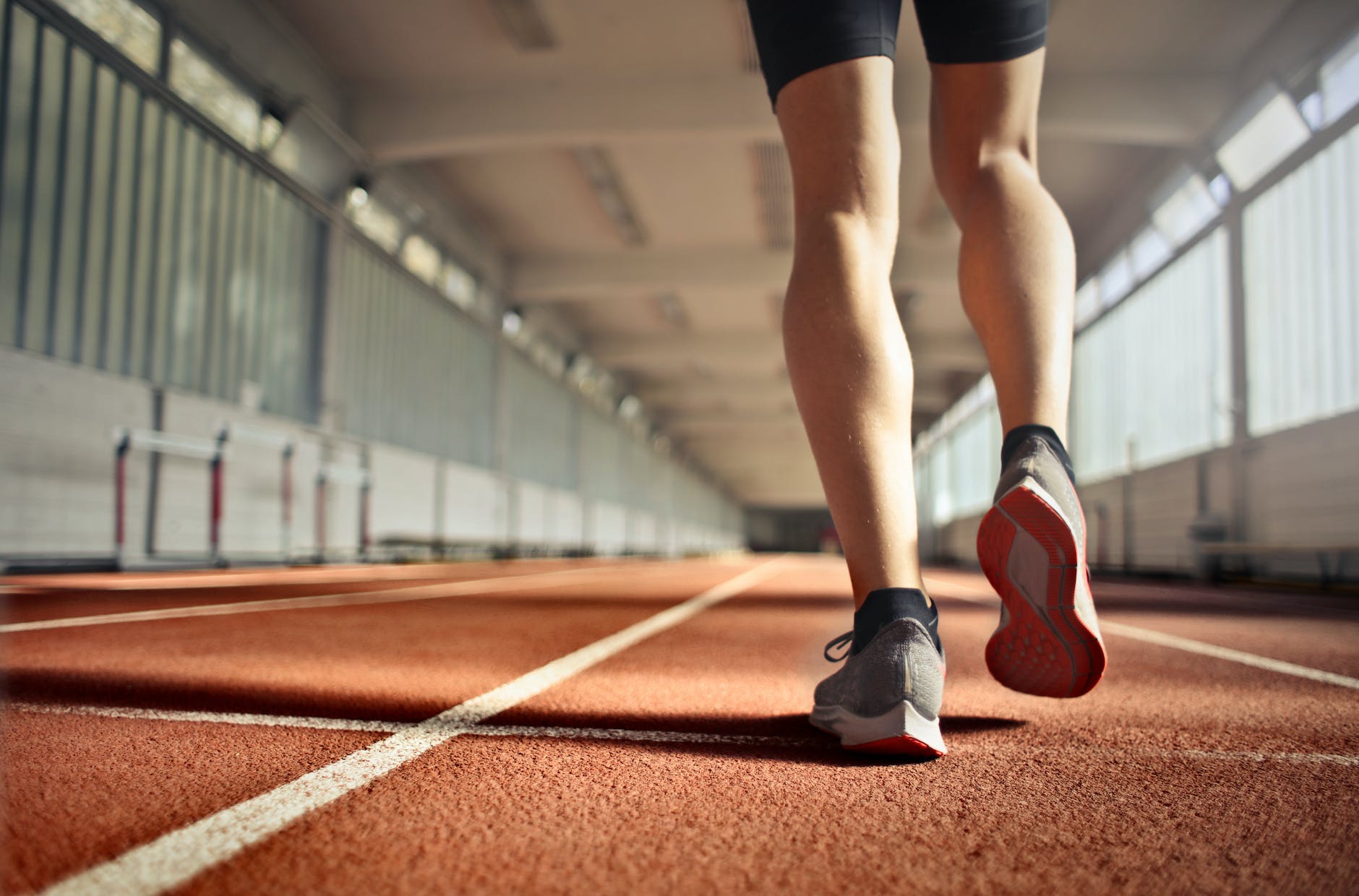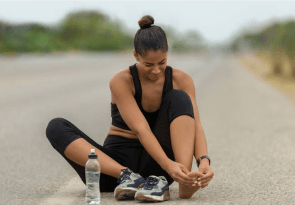Athlete's Foot: 5 Killer Ways To Treat


Athletes Foot: 5 Killer Ways to Treat It
Athlete's Foot, also known as tinea pedis, is a fungal infection that affects the skin between the toes. It can cause itching, burning, and scaly rashes. This article will explore five effective home remedies for treating Athlete's Foot. These remedies include using hydrogen peroxide for disinfection, using over-the-counter antifungal products, applying tea tree oil for its antibacterial properties, using isopropyl alcohol as a germicidal solution, and utilizing saltwater soaks and vinegar paste. Additionally, preventive measures will be discussed to avoid recurrence. Alternative options and unconventional treatments will also be briefly mentioned.
What is Athlete's Foot?
Athlete's Foot, also known as tinea pedis, is a fungal infection that commonly affects the skin between the toes. Understanding this common condition and its symptoms is crucial for effective treatment and prevention.
Understanding the Fungal Infection
Athlete's Foot is caused by various types of fungi, including Trichophyton and Epidermophyton. These fungi thrive in warm, moist environments, making the feet an ideal breeding ground. When the conditions are favorable, the fungi invade the outer layer of the skin, leading to an infection.
These fungi thrive in places like locker rooms, public showers, and swimming pool areas, where people walk barefoot and come into contact with the infected surfaces. The infection can spread from person to person through direct contact or by sharing contaminated items like towels or socks.
People with weakened immune systems, individuals who wear tight, non-breathable shoes for extended periods, and those with excessive sweating are more susceptible to developing Athlete's Foot.
Common Symptoms of Athlete's Foot
The symptoms of Athlete's Foot can vary from person to person, but some common signs include:
- Itchy and burning sensation between the toes
- Redness and inflammation of the infected area
- Dry, flaky, and scaly skin
- Foul odor
- Pain and discomfort while walking or wearing shoes
It's important to note that these symptoms can also be indicative of other foot conditions, so a proper diagnosis from a healthcare professional is crucial for effective treatment.
Causes and Risk Factors - Athlete's Foot
Understanding the underlying causes and risk factors of Athlete's Foot can help in effectively managing and preventing this fungal infection. Various factors contribute to an increased risk of infection and understanding them is essential for maintaining foot health.
Factors that Increase the Risk of Infection
Several factors can increase the likelihood of developing Athlete's Foot:
- Prolonged exposure to moist environments, such as public swimming pools, locker rooms, and communal showers
- Direct contact with infected surfaces or objects, including towels, socks, shoes, or floors in public areas
- Weakened immune system, which may occur due to certain medical conditions or medications
- Personal history of previous fungal infections or susceptibility to skin conditions
- Living in humid climates that promote fungal growth
It is important to note that anyone can develop Athlete's Foot, but these risk factors increase the vulnerability to infection.
How Sweaty Feet and Tight Shoes Contribute
Sweaty feet combined with wearing tight-fitting shoes can create an ideal environment for fungal growth and exacerbate the risk of developing Athlete's Foot. When feet sweat excessively, the moisture becomes trapped between the toes, providing a warm and moist environment that supports fungal overgrowth.
Tight shoes, especially those made of non-breathable materials, further enhance this problem by restricting airflow and preventing proper ventilation for the feet. The lack of proper ventilation creates a breeding ground for fungi to thrive.
Additionally, tight shoes can cause friction and irritation, leading to small cracks or breaks in the skin, which provide entry points for fungus. These cracks weaken the skin's protective barrier and make it more susceptible to infection.
To minimize the risk, it is crucial to keep the feet dry, wear breathable shoes that provide ample space for the toes, and avoid prolonged exposure to moisture.
Home Remedies for Treating Athlete's Foot - Athlete's Foot
When it comes to treating Athlete's Foot at home, several effective remedies can help alleviate the symptoms and promote healing. These remedies include:
Using Hydrogen Peroxide for Disinfection
Hydrogen peroxide can be an effective disinfectant for the affected area, aiding in the healing process. However, it is recommended to consult with a podiatrist before using it to ensure proper usage and dosage.
Over-the-Counter Antifungal Products
Consider using over-the-counter antifungal products, such as powders, sprays, or lotions, specifically designed to combat fungal infections. These products should be applied for a recommended duration of two to three weeks to achieve optimal results.
Tea Tree Oil for Its Antibacterial Properties
Tea tree oil has natural antibacterial and antifungal properties, which can help reduce itching, scaling, and burning sensations associated with Athlete's Foot. Apply tea tree oil at least twice a day for a month to experience its benefits.
Isopropyl Alcohol as a Germicidal Solution
Isopropyl alcohol, similar to hydrogen peroxide, possesses germicidal and fungicidal properties. It can be used in two ways: directly applying it with a clean cloth or soaking your feet in a diluted alcohol-water bath for around 30 minutes.
Saltwater Soaks and Vinegar Paste
Saltwater soaks and vinegar paste can also aid in combating Athlete's Foot. This can be used for soaking the feet, while a paste made with vinegar can be applied directly to the affected area. Both have antifungal and antibacterial properties.
Incorporating these home remedies into your Athlete's Foot treatment routine can help alleviate symptoms and promote healing. However, if the condition persists or worsens, it is advisable to consult a podiatrist for further evaluation and guidance.
Remember, prevention and maintaining proper foot hygiene are key to avoiding a recurrence.
Prevention Tips to Avoid Recurrence - Athlete's Foot
Preventing a recurrence of Athlete's Foot is essential to maintain healthy feet and prevent the discomfort that comes with this fungal infection. By following these prevention tips, you can significantly reduce the chances of Athlete's Foot returning:
Maintaining Clean and Dry Feet
Maintaining good foot hygiene is crucial in preventing the recurrence of Athlete's Foot. Here are some tips to keep your feet clean and dry:
- Wash your feet thoroughly with warm water and mild soap every day.
- Make sure to dry your feet meticulously, especially between the toes, as moisture promotes fungal growth.
- Consider using talcum powder or antifungal powder on your feet to keep them dry throughout the day.
- Change your socks daily and opt for moisture-wicking and breathable materials like cotton or moisture-absorbing synthetic blends.
- Avoid wearing damp or wet shoes, as they create a favorable environment for fungal growth.
Proper Foot Hygiene Practices
In addition to keeping your feet clean and dry, practicing proper foot hygiene can help prevent the recurrence of Athlete's Foot. Here are some recommendations:
- Trim your toenails regularly to prevent bacteria and fungi from accumulating under them.
- Avoid sharing foot care tools, such as nail clippers or files, to minimize the risk of cross-contamination.
- Choose breathable and properly fitting footwear that allows air circulation and reduces sweating.
- Wear shower shoes or flip-flops in public spaces like gyms, communal showers, and swimming pool areas.
- Consider using antifungal sprays or powders in your shoes to minimize the risk of reinfection.
Tips for Walking in Public Areas
Walking barefoot in public areas can increase the risk of contracting or spreading Athlete's Foot. Follow these tips when in public areas:
- Avoid walking barefoot in public showers, locker rooms, and around pool decks.
- Wear flip-flops or other protective footwear to minimize direct contact with potentially contaminated surfaces.
- After visiting public spaces, thoroughly wash and dry your feet to remove any potential pathogens.
- Consider using antifungal sprays or powders on your feet after being exposed to public areas.
- Keep an eye on any changes or symptoms on your feet and seek prompt medical attention if necessary.
By implementing these prevention tips, you can minimize the chances of Athlete's Foot recurrence and maintain healthy feet. Remember, prevention is key to avoiding the discomfort and inconvenience associated with this fungal infection.
Additional Home Remedies and Alternative Options - Athlete's Foot
When it comes to treating Athlete's Foot, there are alternative remedies worth exploring. While not backed by extensive scientific evidence, some individuals have found success with these unconventional methods.
Exploring Unconventional Methods
If traditional treatments don't provide the desired results, you may consider trying unconventional methods for relief. Some individuals have reported positive outcomes with these alternative approaches:
- Urine Treatment: While it may sound unusual, some people claim that applying urine to the affected area can help alleviate symptoms. However, the effectiveness of urine as a treatment option remains inconclusive, and further scientific research is needed.
- Apple Cider Vinegar Soaks: Soaking your feet in a mixture of warm water and apple cider vinegar is believed to have antifungal properties. This remedy aims to create an unfavorable environment for the fungus to thrive.
- Colloidal Silver Sprays: Colloidal silver has gained popularity as an alternative therapy for various conditions. Applying a silver spray to the affected area may help inhibit the growth of fungi. However, its efficacy for treating Athlete's Foot has not been scientifically proven.
- Probiotics and Natural Supplements: Some individuals tout the benefits of probiotics and natural supplements for their immune-boosting properties. These supplements may help support your body's defenses against fungal infections.
It's important to note that while these alternative options exist, their effectiveness may vary from person to person. It's advisable to consult with a healthcare professional before attempting any unconventional treatments.







